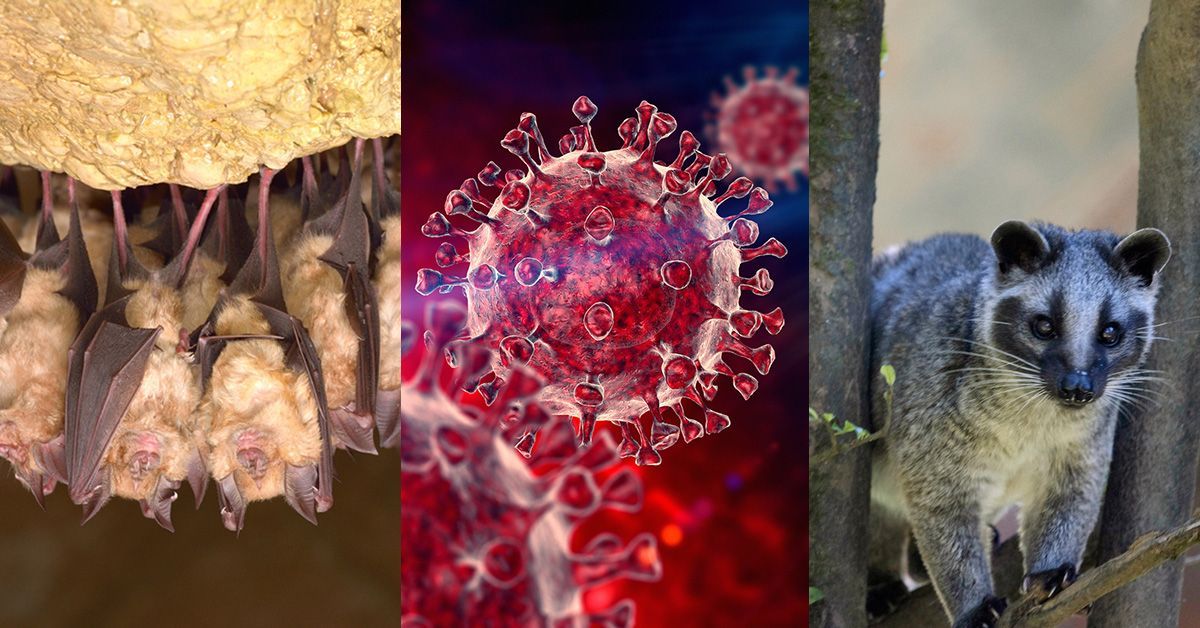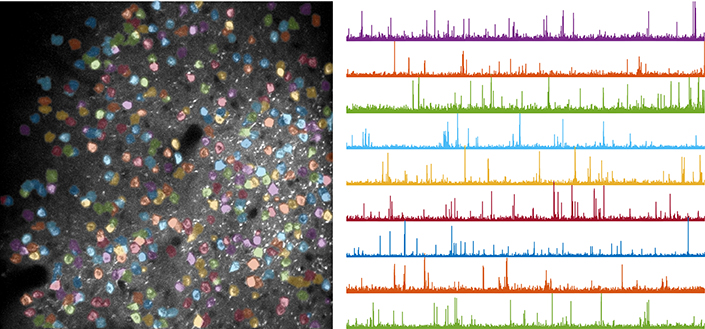2025-05-07 カリフォルニア大学サンディエゴ校 (UCSD)
 Horseshoe bats are the primary host for the ancestor of the viruses that caused both the 2002 SARS outbreak and the COVID-19 pandemic, but a new study suggests that the wildlife trade transported the virus to the places where they first emerged in humans. Photo credit: Composite image: iStock: Greater horseshoe bats, ePhotocorp; SARS-CoV-2 virus, manaemedia; palm civet: Remus86
Horseshoe bats are the primary host for the ancestor of the viruses that caused both the 2002 SARS outbreak and the COVID-19 pandemic, but a new study suggests that the wildlife trade transported the virus to the places where they first emerged in humans. Photo credit: Composite image: iStock: Greater horseshoe bats, ePhotocorp; SARS-CoV-2 virus, manaemedia; palm civet: Remus86
<関連情報>
- https://today.ucsd.edu/story/bat-virus-evolution-suggests-wildlife-trade-sparked-covid-19-virus-emergence-in-humans
- https://www.cell.com/cell/fulltext/S0092-8674(25)00353-8
SARS-CoVおよびSARS-CoV-2の祖先となるコウモリウイルスの出現時期と地理的起源 The recency and geographical origins of the bat viruses ancestral to SARS-CoV and SARS-CoV-2
Jonathan E. Pekar ∙ Spyros Lytras ∙ Mahan Ghafari ∙ … ∙ Michael Worobey ∙ Joel O. Wertheim ∙ Philippe Lemey
Cell Published:May 7, 2025
DOI:https://doi.org/10.1016/j.cell.2025.03.035
Highlights
- Fragments of the human SARS-CoVs share very recent common ancestors with bat viruses
- SARS-CoV-1-like and SARS-CoV-2-like viruses have circulated in Asia for millennia
- Recent ancestors of human SARS-CoVs likely circulated in Western China and Northern Laos
- These ancestors traveled unexpectedly fast to reach sites of human emergence
Summary
The emergence of SARS-CoV in 2002 and SARS-CoV-2 in 2019 led to increased sampling of sarbecoviruses circulating in horseshoe bats. Employing phylogenetic inference while accounting for recombination of bat sarbecoviruses, we find that the closest-inferred bat virus ancestors of SARS-CoV and SARS-CoV-2 existed less than a decade prior to their emergence in humans. Phylogeographic analyses show bat sarbecoviruses traveled at rates approximating their horseshoe bat hosts and circulated in Asia for millennia. We find that the direct ancestors of SARS-CoV and SARS-CoV-2 are unlikely to have reached their respective sites of emergence via dispersal in the bat reservoir alone, supporting interactions with intermediate hosts through wildlife trade playing a role in zoonotic spillover. These results can guide future sampling efforts and demonstrate that viral genomic regions extremely closely related to SARS-CoV and SARS-CoV-2 were circulating in horseshoe bats, confirming their importance as the reservoir species for SARS viruses.


